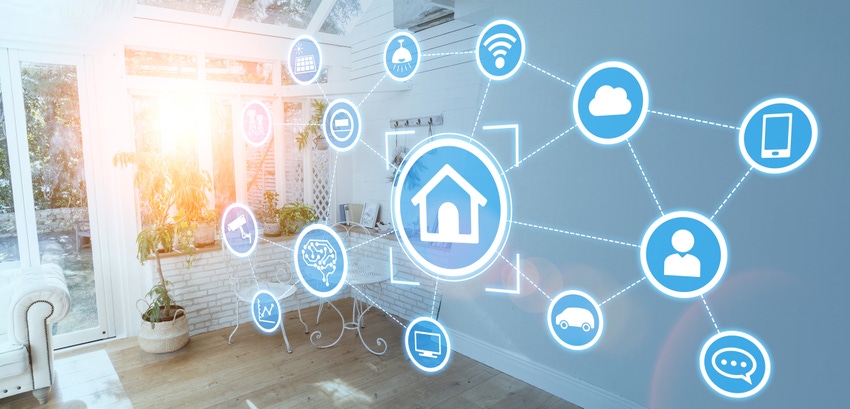Smart Products Become Smarter With Right Approach
Implementing model-based systems engineering on a digital platform, in combination with the Matter smart home standard is the place to start
December 13, 2023

A growing number of consumer home-and-lifestyle products have been getting progressively smarter since the late 1980s when internet technology became more mature and market demand took off.
Growth remains on a steep upward trajectory.
These sensor-enabled devices for the home — products of rapid innovation cycles and connected to the internet — offer higher functionality. Consumers can control the devices from anywhere, from preheating a spa and oven to programming a robot to clean on schedule.
Smart products can work independently. However, integrating this intelligence presents manufacturers with a big challenge—namely, how to design and build reliable devices that are affordable and easy to use.
Unlike earlier generations of “dumb” products, smart devices pose design complexity because they require software-intensive cyber-physical systems. Cyber-physical systems depend upon the seamless integration of computation and physical components. These Internet of Things (IoT)-enabled products also require more components, built-in security and much more.
As a result, product development requires the use of advanced digital tools and methods, such as model-based systems engineering (MBSE), as well as the integration of multiple engineering disciplines, as I’ll discuss momentarily.
Though used in all industry verticals, IoT devices comprised about 60% of the consumer market in 2020, according to Statista, a global business intelligence platform. Overall, the number of IoT devices is forecast to grow to more than 8 billion by 2030.
The problem is that designing them involves a great deal more engineering than traditional processes, such as machining, forming, joining and mechanical assembly.
Development of smart devices includes software and hardware systems integrated with technologies such as IoT. Bringing smart consumer products to market requires advanced digital tools and processes. Moreover, multiple engineering disciplines, such as software, systems, hardware, electronics and quality engineering, as well as supporting teams such as purchasing, manufacturing and marketing must all be aligned.
As a result, achieving the level of quality and reliability that consumers expect is far from assured, depending on how well a manufacturer can manage complexity and designers’ understanding of what consumers want.
This makes smart home and lifestyle devices fundamentally more complex than previous generations and far more challenging to produce. To address this problem, companies seek a solution with a more methodical approach to product development.
One such approach is the implementation of MBSE on a digital platform, in combination with a smart home standard called Matter.
MBSE is the formalized application of precise 3D computer models alongside simulation and digital twins to establish a product’s optimal design at the very outset.
For its part, a cloud-based platform ties together all of the digital tools and processes used in MBSE, including a uniquely integrated modeling and simulation function. The combination of these features enables product-development teams to establish end-to-end workflows across disparate engineering domains and collaborate in real time.
The platform reduces complexity and defines an optimal solution early in design, avoiding costly and time-consuming mistakes and technical challenges late in the development cycle. Efficiencies of this magnitude also have the potential to shorten a new product’s time to market and improve quality.
Then there’s Matter, a new open-source standard launched in 2022 and based on the internet protocol. Its goal is to foster interoperability among devices and enable consumers to seamlessly control smart home and lifestyle devices from different manufacturers.
Matter helps manufacturers build products that are compatible across brands such as Amazon, Alexa, Apple, Siri, Good Assistant and other smart home and lifestyle services, according to the Connectivity Standard Alliance, the nonprofit that oversees the standard.
By employing industry-specific solutions on a platform of choice, engineering teams use an MBSE approach to simplify the complexity of developing smart-home devices that are compliant with the Matter standard. A smart approach to smart-product development allows consumer-goods manufacturers to delight customers with products that automate and improve their homes.
About the Author(s)
You May Also Like

.png?width=700&auto=webp&quality=80&disable=upscale)
.png?width=700&auto=webp&quality=80&disable=upscale)
.png?width=300&auto=webp&quality=80&disable=upscale)
.png?width=300&auto=webp&quality=80&disable=upscale)
.png?width=300&auto=webp&quality=80&disable=upscale)
